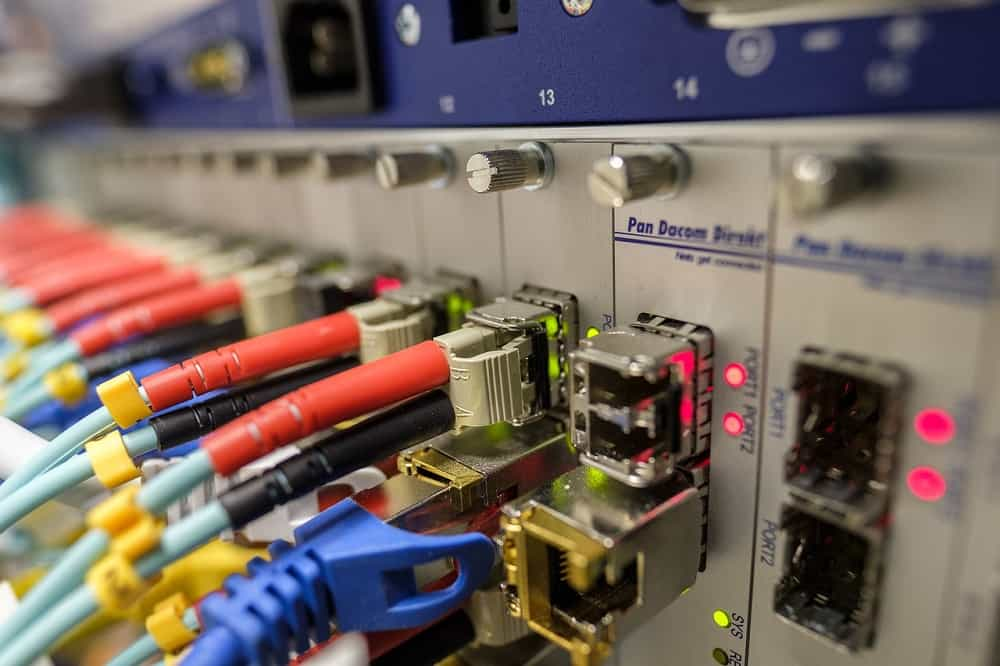In this technological age, a fast and reliable internet connection is crucial. Whether you're participating in a conference call or accessing business-critical applications, a stable internet connection can significantly increase your company's productivity and your employees' overall work efficiency.
But what's the best connection for my business? Is a DSL connection sufficient, or is it better to switch to fiber optic? In recent years, it's seemed like a silly question, given the undeniable advantages of the new fiber optic technology. But let's take a closer look at the question, because the answer isn't so obvious. The two connections have very different navigation standards, and in any case, it's necessary to first check the fiber optic service coverage in your area.
As with private customers, fiber-optic internet plans for businesses have more competitive prices and are often subject to promotions, as they are still a new technology. Specifically, DSL connections can provide a service with download speeds of 30 Mbps, while fiber-optic connections promise browsing speeds of up to 1 Gbps.
For those who decide to switch from DSL to fiber optic, it's important to know that replacing the old modem is required. There's no obligation or contractual clause requiring this, only that you won't be able to surf using fiber optic standards with a DSL device. Furthermore, the new modems allow you to connect up to 100 devices to the company network.
Why is DSL still competitive?
DSL (Digital Subscriber Line) may not be the top internet connection today, but chances are it's available within walking distance of your business, unlike fiber optics. In fact, in many countries, fiber coverage is still far from ubiquitous, while DSL high-speed Internet access is available virtually everywhere, thanks to traditional telephone lines. During the 1990s, Internet access via DSL technology grew very rapidly, replacing the old dial-up and T1 options that were very slow and expensive. DSL internet access works on different frequencies than the thousands available through a phone line, so you can have high-speed internet service and a phone conversation at the same time.
At the enterprise level, DSL connections are still reliable and readily available. The positives pretty much balance out the negatives: slower loading times are matched by lower costs, and still decent speeds for multiple users. Also, along with wired internet, which has its own unique set of advantages and disadvantages, DSL may be the only high-speed broadband option, depending on the geographic location of your business.
Although it is slowly dying out, there are many viable DSL internet plans for an online business, especially if in the early startup phase where you are trying to stay within certain budget limits.
You may also like
The Top Above-Ground Pools of 2025
Dive into the latest trends in above-ground pools for 2025, exploring innovative features, pros and cons, price ranges, and warranty options. As these pools soar in popularity, understanding their benefits and potential drawbacks is essential for prospective buyers.
The opening of the Nintendo Museum in Kyoto: A new paradise for video game enthusiasts
The recently opened Nintendo Museum in Kyoto offers visitors a fascinating journey through the history and development of the famous Japanese video game brand. Focusing on the themes of popular Nintendo games and accessories, the museum is a must-see for fans from all over the world. Visitors can enjoy interactive exhibits and immerse themselves in Nintendo's past and future.
Robot lawnmowers: The path to the perfect lawn
Robotic lawnmowers have revolutionized garden care. This article examines the technical features, advantages and disadvantages of various models, and highlights costs and warranty options.
The Anticipated Launch of Nintendo Switch 2: A Glimpse into the Future of Gaming
The gaming world is abuzz with excitement as Nintendo gears up to release the much-awaited Nintendo Switch 2 in 2025. This article delves into the console’s technical specifications, potential advantages, disadvantages, pricing, and warranty options, providing gamers with a comprehensive understanding of what to expect.
